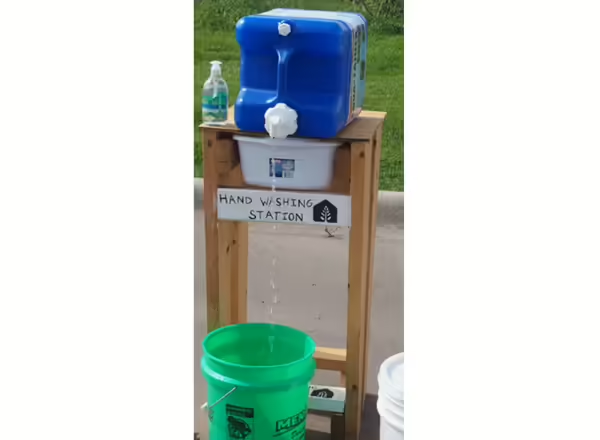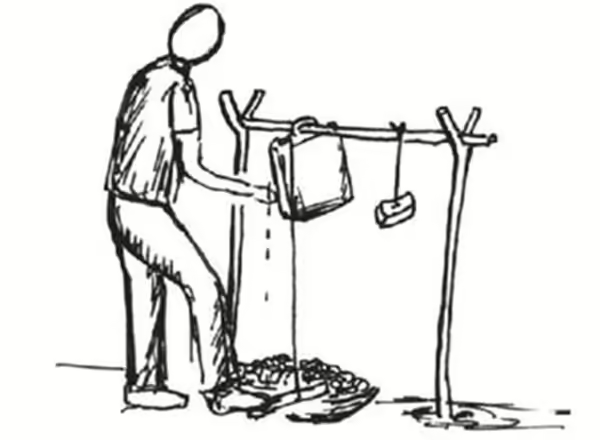
Handwashing is one of the key hygienic practices that can reduce the spread of diseases and foodborne illnesses along the farm to fork continuum. We use hands to complete several tasks throughout the day and in so doing, we touch many different surfaces, some of which may contain organisms that may make us sick. If hands are not washed properly, they can transfer the disease-causing organisms from one surface to another, contributing to the spread of diseases. To reduce the spread of diseases, hands must be washed before starting to work, after using the toilet, before and after eating, before preparing food, after touching animals and animal waste, before putting on gloves, and whenever hands become contaminated.
To remove disease-causing organisms from hands using the handwashing practice, wet hands with clean potable water, apply soap and lather, scrub hands for 20 seconds remembering the fingertips, back of the hands, and palms that are often missed. Next, rinse hands with water and then dry with a single use towel.
Failure to wash hands properly before harvesting fresh produce has been found to lead to the contamination of many kinds of harvested fresh produce including leafy greens, strawberries, and carrots. This failure includes not washing hands at all, washing hands using water alone, and wearing gloves without washing hands first. All people are encouraged to wash hands whenever they become contaminated. People handling food prior to its distribution for example workers on the farm, packing facilities, food processing facilities, restaurants, school cafeterias, soup kitchens among others should wash hands often.
Handwashing stations are often permanent but can be constructed to allow movement from one location to another, based on where handwashing is needed. Portable handwashing stations may be appropriate for farms, field days with people gathering, petting zoos, farmers markets among others. When designing your portable handwashing station, keep in mind to provide the resources needed, minimize bending and tiptoeing to reach the resources, and put the handwashing station where it can be accessed by everyone.
Here are three examples of portable handwashing stations. Click on the links to watch a video on how each station was constructed and the materials you will need to start constructing your portable handwashing station.
References
Barriers and facilitators to community hand washing.
The Common Missed Handwashing Instances and Areas after 15 Years of Hand-Hygiene Education.
Ineffective hand washing and the contamination of carrots after using a field latrine.
Importance of hand hygiene during harvesting of strawberries.
Video: Fight germs. Wash hands. Centers for Disease Control and Prevention.

Design one
Description: Has no wheels and it is hand operated.
Watch a video. Download a construction guide.

Design three
Description: This Tippy Tappy also known as a tip tap,has no wheels and its foot operated. If all you have is a few poles and a string, you too can construct a handwashing station. With this design, everything can be moved easily except the poles in the ground.
Image credit: World vision.
Watch this video to see how it’s done.
